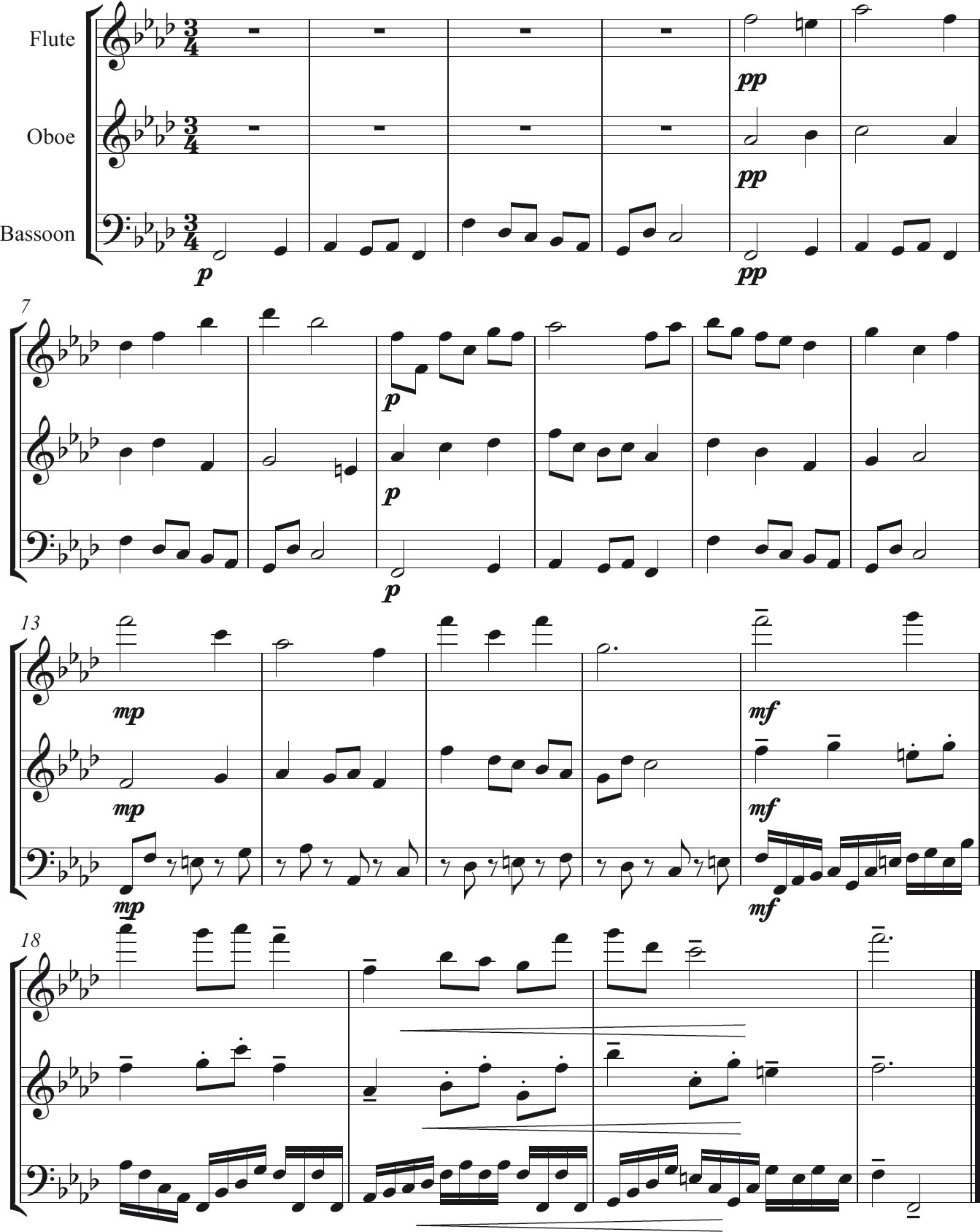
When we start to compose, it's easy to forget about structure. The two previous columns explored a very basic structure formed from an eight-bar phrase with unexpected harmonies, almost randomly selected by our student, with just a few rules. This month's article examines a similar, but nevertheless, useful structure: ground bass.
Ground bass is also known as basso ostinato (or ‘obstinate bass’) and it's a note pattern in the bass part, usually lasting several bars, which repeats throughout a piece. The bass ‘theme’ generally does not change, but other musical lines evolve and develop, with the bass line providing synergy throughout. Ground bass was a popular structural element in Renaissance and Baroque music, and could be found in 13th-century French motets. In the 16th-century, it became increasingly popular due to the use of improvisation, with the creation of new and ever-changing melodies above the bass line.
Here is a potential bass line on which to build our ground bass (see below).
I've deliberately chosen a fairly short four-bar phrase and have harmonised it with standard diatonic harmony. However, students could easily combine a ground bass with a more chromatic approach, even employing chords in a similar manner to that suggested in my previous two columns, if they don't yet understand harmonisation.
This bass line is a melody in itself, but a more basic bass notation may be preferable at first, perhaps using one note per bar. I've suggested a chord structure underneath some of the notes. It's possible to harmonise every note, but harmonising just two beats per bar is simpler and generally more effective.
This phrase might reappear using the same note pattern without any variation at all, or it may be repeated up or down an octave or two. That's the beauty of being the composer – you get to choose! The trick with this type of composition is to ensure sufficient variety.

I have written the following short piece for wind trio: flute, oboe and bassoon (see p32). The bassoon, unsurprisingly, contains the bass line. After the ground bass, which is usually introduced at the opening, the flute and oboe enter with a hymn-like accompaniment (bars 5–8), and from bar 9–12, offer a slight variant with more movement.
At bar 13, I have changed the character by giving the ground bass to the oboe, with the bassoon sounding an off-beat accompaniment and the flute soaring high above. The flute is then given the ground bass at bar 17, and the tempo feels faster, merely by adding semiquavers in the bassoon part. Different articulation in the oboe part makes for more interest, too, and its tune might be considered a ‘counter-melody’ or a secondary theme.
Occasionally, it can be fun to go against the grain and use the ground bass either in a different part or on a different instrument – not necessarily in the bass line – as shown here (although this is not sticking ‘strictly’ to the ground bass concept).
More variation might be achieved by employing the ground bass in a pattern of octave displacement (as with the flute part from bar 17–20, especially bars 19 and 20), or perhaps continuing the ground bass theme in double notes or triplets, varying the texture. Once students understand the many possible combinations, they will view the ground bass as a creative and engaging structural form.

Miniature Trio For Flute, Oboe & Bassoon
Melanie Spanswick is a pianist, writer, teacher, composer and adjudicator. Find out more at melaniespanswick.com








